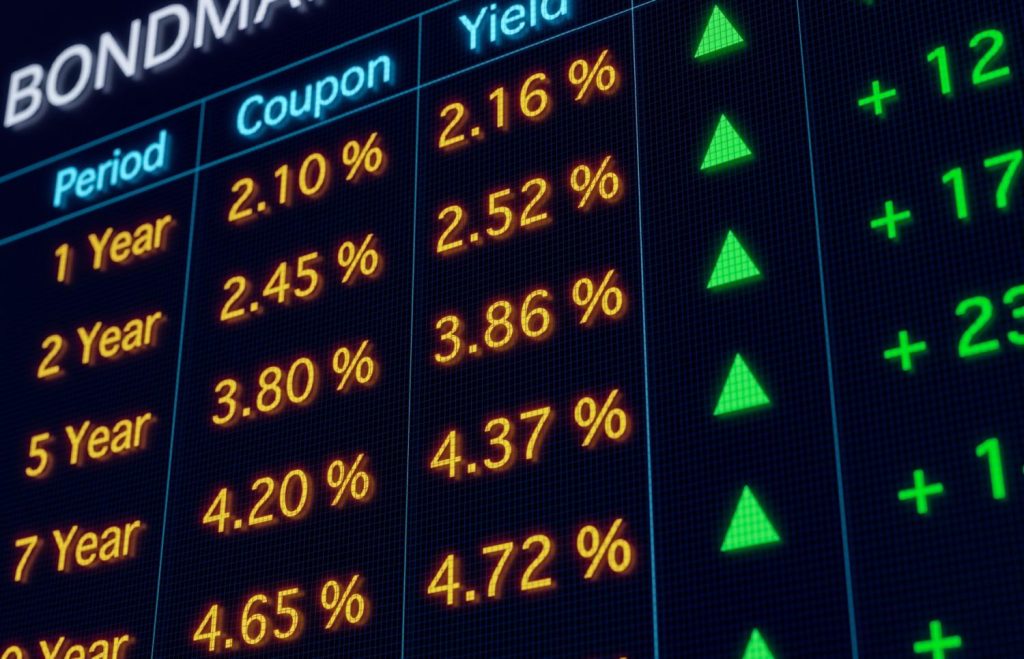The US Treasury bond market, a cornerstone of the global financial system, plays a crucial role in determining interest rates and providing a risk-free benchmark for investors. As we face an evolving economic landscape, examining where we stand and predicting where we might be headed is essential.
Historically, Treasury bonds have been considered safe investments, providing stability amid market volatility. However, with recent economic shifts and policy changes, the market dynamics are evolving. This blog will delve into the current state of the Treasury bond market, explore influencing factors, and discuss potential future trends.
The current state of the Treasury bond market

As of now, the Treasury bond market is navigating a period characterized by significant uncertainty and adjustment. With the introduction of expansive fiscal policies and fluctuating economic indicators, bond yields have experienced increased volatility. This environment has prompted many investors to reconsider their positions and strategies within this market.
Inflationary pressures have played a considerable role in shaping the current state of the bond market. Rising inflation often leads to higher bond yields, as investors demand more significant returns to offset the loss of purchasing power. Consequently, the Federal Reserve’s approach to interest rates and monetary policy is under intense scrutiny, as their actions will critically influence yield movements.
Moreover, geopolitical tensions and global trade dynamics continue to impact the Treasury bond market. As investors seek safe-haven assets amidst uncertainty, demand for U.S. debt securities remains robust, though the landscape is continually shifting, influenced by both domestic and international developments.
The impact of Federal Reserve policies
Federal Reserve policies have a profound influence on the Treasury bond market. The central bank’s decisions regarding interest rates directly affect bond yields and, consequently, the attractiveness of these securities to investors. In recent years, the Fed’s actions have sought to balance promoting economic growth with controlling inflation, a delicate equilibrium that significantly impacts the bond market.
Quantitative easing measures, introduced during economic downturns, have led to an increase in bond purchases, thus affecting supply and demand dynamics. The challenge for the Federal Reserve is to unwind these measures without causing undue disruption to the market. As they navigate tapering asset purchases and potential interest rate hikes, market participants are keenly watching for any signs of policy shifts.
Economic indicators and their effects
Economic indicators such as GDP growth, employment rates, and consumer spending significantly influence the Treasury bond market. Positive economic data often lead to expectations of a strong economy, which might result in rising yields as investors anticipate higher interest rates. Conversely, weaker data can lead to bond rallies as investors seek stability.
The interplay between these indicators and market expectations creates a dynamic environment. Investors must stay informed of macroeconomic trends to adjust their strategies accordingly. Understanding the relationship between economic performance and bond yields is crucial for making informed investment decisions in this ever-evolving market.
Future trends in the Treasury bond market
Looking ahead, several trends are likely to shape the Treasury bond market. One significant trend is the ongoing digital transformation within the finance industry. Technological advancements could streamline trading processes, improve transparency, and enhance market efficiency, potentially attracting a broader range of participants.
Additionally, the global focus on sustainable investing may influence the Treasury bond market. As environmental, social, and governance (ESG) considerations gain prominence, demand for green bonds and investments that align with sustainability goals might increase. This shift could lead to changes in issuance strategies and investor preferences.
Potential risks and challenges
Despite these promising trends, potential risks and challenges remain. Uncertainty linked to global economic recovery, potential shifts in monetary policy, and geopolitical tensions could pose substantial threats to market stability. These factors highlight the importance of risk management strategies for investors navigating the Treasury bond market.
Moreover, the evolving regulatory landscape might present challenges. Compliance with new rules and standards could affect market participation and liquidity. Staying abreast of regulatory changes and their implications will be vital for stakeholders aiming to capitalize on opportunities within this market.
Navigating the future
As the Treasury bond market continues to evolve, staying informed and agile will be crucial. Investors, policymakers, and financial institutions must adapt to emerging trends and unforeseen challenges. Leveraging insights from market analysis and economic forecasts can enable stakeholders to make informed decisions and mitigate risks.
In conclusion, the Treasury bond market stands at a transformative juncture. By understanding current dynamics and anticipating future developments, participants can better navigate this pivotal segment of the financial system. As we look to the future, continued vigilance and adaptability will be key to thriving in the ever-changing landscape of the US Treasury bond market.

